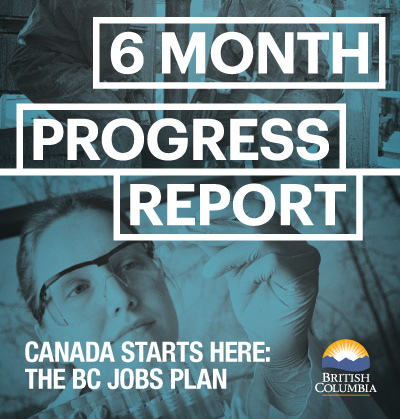Change the conversation, support rabble.ca today.
As we close out 2012, B.C. finds itself in some precarious economic waters. Back in 2008, it seemed clear that we would see several years of a stagnant economy — in B.C., Canada and the U.S. — and that song remains the same. To recap, a massive housing bubble that built up through the naughties (2000s) finally burst in 2008, feeding a financial crisis, as extremely loose (some would say fraudulent) lending practices pushed housing prices up to spectacular, never-seen-before levels, and created a plague of toxic mortgage-based assets. The inevitable collapse of that bubble triggered our current context of depression economics; that is, a major drop in the value of housing assets on the balance sheets of many millions, making people poorer and undercutting their other consumption (in the worst case scenarios, people are “underwater” with assets valued at less than their debts).
For B.C., the bubble meant big economic gains for a while, including a 4 per cent unemployment rate, then a period of recession from late 2008 into 2010. On an annual basis, 2009 was the first year B.C. entered a technical recession, negative GDP growth, since 1981. Housing construction and real estate were huge economic drivers during the boom, and B.C. lumber exporters did well in the U.S. market. While the bubble clearly popped in the U.S. and Europe, B.C. saw a minor housing market correction in 2009, then recovery in 2010 and 2011. This year, housing sales and housing prices falling, and with household debt at record high levels (mortgage debt a big part of that), there is not much likelihood that housing will boom in the way British Columbians have to expect. While many have deemed B.C. immune to a bursting property bubble, such events have happened before.
Some other structural imbalances are noteworthy. B.C. is running a trade deficit of about 9 per cent of GDP — our exports are not paying for our imports so we are essentially importing capital in order to make ends meet. The other is the accumulating cash balances in large corporations. This is a Canada-wide problem, one for which outgoing Bank of Canada Governor Mark Carney has chided businesses. He did not go so far as to take the next step — increase corporate income taxes and put that money to work in the real economy with investments in public infrastructure that we need.
These two engines of growth, housing and resource exports, have long been part of the B.C. economic story. And generally it has been a good news story. But natural resources are now pushing up against environmental limits. Coal and natural gas exports, in particular, cannot be part of the long game for B.C. due to their detrimental contribution to climate change. Already, B.C.’s exported GHG emissions are more than double our own domestic combustion of fossil fuels.
In the corridors of power, however, a resource extraction mindset still dominates, as can be seen in the BC Jobs Plan, released in September 2011. That “plan” banks on a lot of new mining and natural gas development, even though mining and oil and gas together only account for about 1 per cent of B.C.’s total employment. An interesting contrast is the BC Labour Market Outlook, which puts its emphasis on health professionals as the top areas for gains over the next decade, not mining and oil and gas. This is true of its regional breakdowns as well as B.C. as a whole, but growth in jobs in the public sector are overlooked by the Jobs Plan. The other major areas that ought to be top of mind are high tech and green tech, so that B.C. can concentrate its efforts on building the foundation for the economy of the future not re-inventing the past.
For workers, B.C. in 2012 is looking a lot like 2008, at least in terms of the macro stats. Total employment fell in 2009, and has since recovered, but as of late 2012 employment is only slightly higher than it was in 2008. The employment rate (total employed divided by total population) fell from 63.2 in 2008 to 60.2 in 2009, and it has remained stubbornly there since, meaning employment gains are only just matching population growth. Average weekly earnings are pretty much flat once inflation is taken into account.
Looking forward, the economic ball is in the government’s court. Austerity is the enemy, and the EU has given us a good view of how pursuing budget cuts in order to balance budgets in order to restore business confidence in order to resume growth is fundamentally bad economics. With the weakness in economic conditions across North America and Europe, and signs of weakening in China, now is not the time to make cuts for the sake of a balanced budget. Federally, we are seeing retrenchment, with $5 billion in spending cuts this year, and to some extent we are seeing that in B.C. too, but worsening economic conditions have increased deficits at both levels. Overall, the advent of spending cuts pushes us into a “you are on your own” economy by shifting costs onto individuals and families, with the worst impacts for vulnerable populations.
Provincially, the game plan for the Liberals was probably to table a balanced budget in February, the last financial announcement before the election, so as to wear the mantle of strong fiscal managers. But such political theatre in a weakened economy would only make conditions worse as the election hit. From the political junkie perspective this will make Budge 2013 one of the most interesting in many years.
All of that said, context matters and B.C. is certainly faring much better than other parts of the world. Lots of places would love to have our problems. But the worst could still be ahead of us, with much hinging on the external environment and housing markets.
Image: BC Gov Photos/Flickr




